Texas Research Lab Unravels Mysteries Behind Friction Stir Welding and Laser Powder Bed Fusion Additive Manufacturing
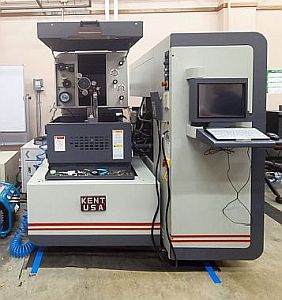
The WSi-200 Wire-Cut Submerge Type EDM from Kent USA has provided the University of North Texas with years of consistent performance.
Researchers at the University of North Texas Research Laboratory are using Kent USA's Wire-Cut EDM to study the metallurgical properties of several new machining and fabricating processes, including 3D printing.
Wire electrical discharge machines (EDM) are most often associated with precision tool and die machining, but it's important to note that this crucial manufacturing technology has numerous other applications besides trim dies, blanking punches, and jig boring quality hole finishing.
At the University of North Texas (UNT) in Denton, for example, researchers are using Wire EDM to support their investigations into the metallurgical properties of several relatively novel machining and fabricating processes, 3D printing among them.
VIDEO: Kent USA WSi-430 Wire Cut Submerge Type Basic Operation
The machine? A WSi-200 Wire-Cut Submerge Type EDM from Tustin, California-based machine tool manufacturer, importer, and distributor Kent USA. "We primarily use the machine to cut material samples for testing and to slice 3D-printed parts off build plates."
Deep Discoveries
That's according to Supreeth Gaddam, a graduate research assistant who's working on his doctorate and is currently in his fourth year of study. He explains that his primary area of interest is friction stir processing but adds that the lab in which the WSi-200 is situated -- the Advanced Materials and Manufacturing Processes Institute (AMMPI) -- delves deeply into materials science and various manufacturing technologies.
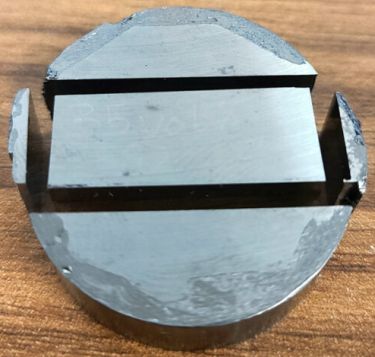
Ceramic-metal hybrid materials (cermets) are electrically conductive, a prerequisite for cutting workpieces with wire EDM.
AMMPI is led by Gaddam's boss, principal investigator and professor Rajiv S. Mishra. It is part of UNT's Department of Materials Science and Engineering, which also houses the Center for Agile and Adaptive Additive Manufacturing (CAAAM). The UNT website states that Discovery Park -- the home for these two research facilities -- boasts "nearly 300 acres of space dedicated to the sciences, technology, and engineering," and is the region's largest research park.
"UNT is a publicly-funded university with a broad curriculum, ranging from computer science and electrical engineering to the liberal arts, social sciences, and much more," says Gaddam. "It's also designated as a Tier One university on the Carnegie rankings, which means we have a very high research output."

A pair of workpieces ready to be joined using friction stir welding, a solid-state process that provides superior weld quality with minimal part distortion.
The WSi-200 Wire EDM is far from the only piece of manufacturing equipment at this forward-looking institution. Gaddam ticked off an impressive list of metal 3D printers, including laser powder bed fusion (LPBF) machines from Aconity3D and TRUMPF, and its latest addition, a solid-state metal printer from MELD Manufacturing that uses rod and bar stock rather than metal powder.
It's this last machine, along with a friction stir welder from Manufacturing Technology Inc. (MTI), that consumes most of Gaddam's time. "Most of the work we do here are contracted projects, either from industry partners or one of the various government funding agencies. That's because we have the capability in-house to carry out friction stir welding and processing ourselves, and then analyze the results."
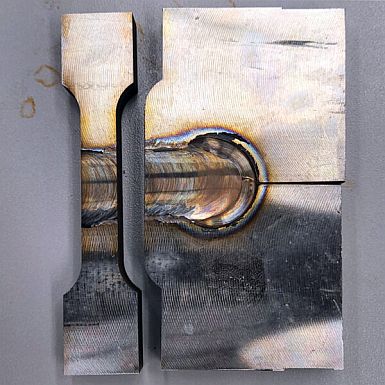
North Texas University researchers use wire EDM to cut dogbone-shaped samples from metal workpieces for analysis, as shown in this friction stir welding example.
Give the Dog a Bone
Here again, the WSi-200 is a critical component in these efforts. With it, Gaddam and other researchers cut out small bits of metal known as "dog bones" that are then placed in testing machines and pulled apart, thereby quantifying the material's tensile and yield strength. They'll also slice and cross-section test samples for micrography and, as noted, use Wire EDM as a high-precision bandsaw to remove metal parts from their build platform after 3D printing.
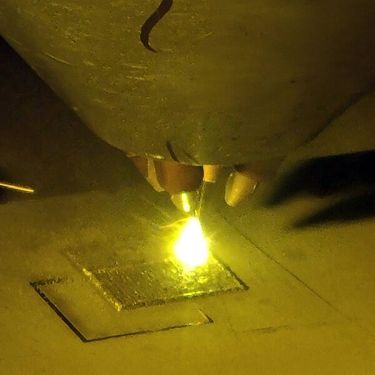
The LENS Directed Energy Deposition (DED) machine from Optomec is one of several 3D printers at the University of North Texas, which researchers there study to better understand and thereby improve additive manufacturing technology.
If you're wondering about the term "friction stir," Gaddam is happy to explain. "Simply put, you take a rotating, dowel-like tool or piece of material, plunge it into the workpiece, and then traverse across, heating the material and workpiece alike to temperatures just below their melting point as you go. This allows you to join two workpieces, enhance a part's mechanical properties, or, in the case of the MELD machine, continuously add material to build a 3D-printed workpiece."
In one example that most of us can relate to, an automaker might apply friction stir technology on an alloy wheel to reinforce certain areas.
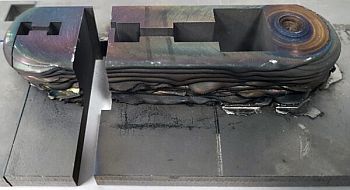
Solid-state 3D printing technology from MELD Manufacturing was used to build this workpiece. Several test samples have been removed to analyze its metallurgical properties.
"Currently, the industry reinforces those sections by making them thicker, but with friction stir processing, we can specifically modify the microstructure in those regions that experience the highest amount of stress or fatigue loading and locally strengthen the material. This will lead to significant cost savings in terms of raw material, secondary machining processes, and to a certain degree, lightweighting."
The WSi-200 is an indispensable piece of equipment to Gaddam and many of the university's graduate students and other staff members. He notes that it was purchased before he came to AMMPI but was transferred to the facility around one year ago. Kent USA service engineer Landon Gooding assisted with the move and recently performed preventive maintenance on the Wire EDM's automatic wire threader (AWT). "The EDM work we do here is fairly straightforward, but we couldn't proceed without it," says Gaddam.
Want more information? Click below.
Rate this article
View our terms of use and privacy policy